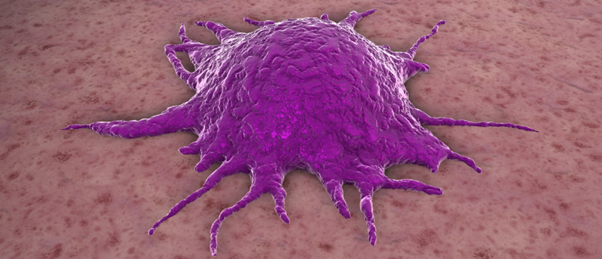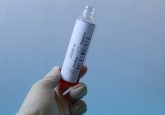Diagnosing cancer with cellular fingerprints

Researchers have developed a technique that uses cellular fingerprints to determine the physical state of tissues and tumors.
As an organism grows, the state of its tissues changes. In the early stages of development, embryos favor a fluid-like state that promotes cell proliferation and expansion, but as the embryo matures, the tissues firm up into a more solid state. There is evidence to suggest that this pattern is reflected in tumor growth and now, researchers from the Massachusetts Institute of Technology (MIT; MA, USA) have used this to develop a technique that assesses a tumor’s growth phase from images of the tumor cells.
There is a growing body of research that suggests that, like an embryo, a tumor’s physical state may indicate its stage of growth. Tumors that are more solid are believed to be relatively stable, whereas tumors that have more fluid-like properties are more likely to grow, mutate and metastasize.
MIT researchers, led by Ming Guo, developed a method, which they’ve termed ‘configurational fingerprinting’, for determining the physical state of a tumor purely by looking at images of it.
 Balkees Abderrahman on exhaled breath biopsy for cancer diagnosis
Balkees Abderrahman on exhaled breath biopsy for cancer diagnosis
Balkees Abderrahman discusses the latest developments in exhaled breath biopsy tests, the clinical trials underway that are testing them and the future applications for this technique in cancer diagnosis.
“Our method would allow a very easy diagnosis of the states of cancer, simply by examining the positions of cells in a biopsy,” explained Guo. “We hope that, by simply looking at where the cells are, doctors can directly tell if a tumor is very solid, meaning it can’t metastasize yet, or if it’s more fluid-like, and a patient is in danger.”
The team developed the technique by analyzing images of either lab-grown tumors or tumors that were biopsied from patients. They used software to map triangular connections between the tumor tissues’ cells and for each triangle in an image, they measured two key parameters: volumetric order, which indicates a tissue’s density fluctuation; and shear order, which indicates how prone the tissue is to deform. They found that by calculating these two parameters and comparing to those of a perfect solid, they were able to determine the state of a tissue.
The team is continuing to image and analyze human cancer biopsies to develop and improve their cellular fingerprints. Guo hopes that, in the future, mapping a tumor’s growth phase could be used to diagnose multiple types of cancer.
“Doctors typically have to take biopsies, then stain for different markers depending on the cancer type, to diagnose,” Guo concluded. “Perhaps one day we can use optical tools to look inside the body, without touching the patient, to see the position of cells, and directly tell what stage of cancer a patient is in.”





